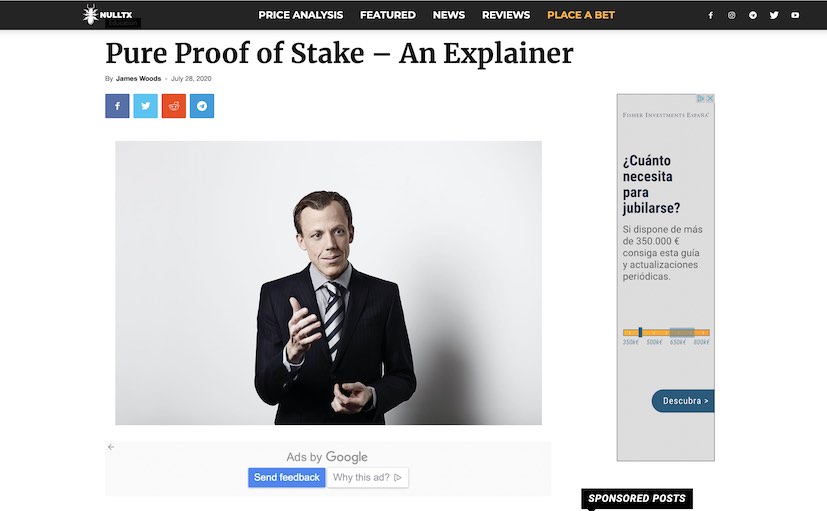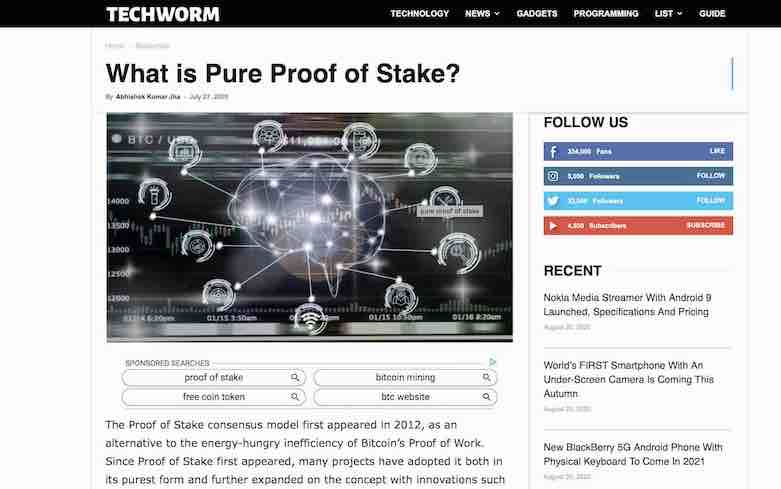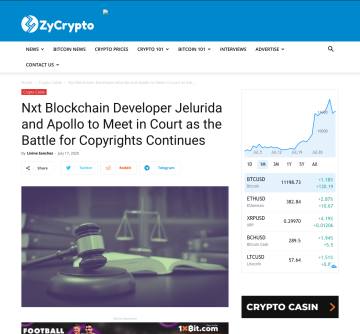Media Mentions
Challenging Ethereum 2.0? Competing blockchains are seizing the moment
Cointelegraph: Ardor runs on a parent and child chain structure, which offers improved throughput compared with a linear blockchain like Bitcoin or Ethereum. This structure can be compared to Ethereum 2.0’s sharding mechanism, where Ethereum’s Beacon Chain will have sharded chains operating as substructures in parallel with one another. However, Ardor launched with another critical feature built in that is often overlooked by blockchain core developers: Ardor child-chain operators can issue their own native tokens, which are compatible with the parent chain.
September 9, 2020


Blockchain Donation Platform GiveSafely Aims To Redefine Charity Sector
Cryptodaily.co.uk: Charity starts on the blockchain. At least it does with GiveSafely, a new trust-based donation platform intended to help charitable organizations incentivize and interact with donors. The project has been in the works for over a year, following conversations with accredited charities. GiveSafely will list only BBB-accredited charities and use TrustTokens to dispense rewards (gifts, online experience) that incentivize donors and tie them to charities’ objectives in relatable and engaging ways. All donors’ personal information is secured by the Ardor blockchain, with donations and donor data flowing directly to the relevant organizations.
August 1, 2020
Dutch Regulator Approves Tokenized Real Estate Crowdfunding Platform
Cointelegraph: Max Crowdfund, a blockchain-powered real estate crowdfunding platform connecting property developers and investors, has received approval from the Financial Markets Authority in the Netherlands. The platform will be powered by Jelurida’s Ardor blockchain, with Kekem emphasizing its “multichain architecture” in allowing companies to “spawn their independent child chain” from the platform as appealing to MPG’s needs.
July 29, 2020


Pure Proof of Stake – An Explainer
Nulltx: It’s worth noting that despite King and Nadal pioneering the concept of Proof of Stake, Peercoin wasn’t a pure Proof of Stake blockchain. It operated a hybrid consensus under which Proof of Work provided the initial coin minting but would be replaced by Proof of Stake over time as coins became available. The first blockchain to launch with an initial coin balance and run on a pure Proof of Stake consensus from the genesis block was Nxt, which launched in November 2013. It was closely followed by Blackcoin, which launched less than six months later.
July 28, 2020
What is Pure Proof of Stake?
Techworm: The Proof of Stake concept was originally pioneered by Sunny King and Scott Nadal in the white paper for Peercoin. While the credit for the overall idea absolutely belongs to them, Peercoin was a hybrid consensus, using a combination of Proof of Work and Proof of Stake. The first implementation of a pure Proof of Stake consensus was with Nxt, which launched its mainnet in 2013, closely followed by Blackcoin, which launched in early 2014.
July 27, 2020


Nxt Blockchain Developer Jelurida and Apollo to Meet in Court as the Battle for Copyrights Continues
ZyCrypto: Crypto is headed to the courts next month when lawyers for Nxt developer Jelurida will present their case against the Apollo blockchain. A lengthy writ of summons outlining the case against Apollo claims alleged repeated violations of the open-source licensing agreement, primarily involving alleged failure to credit Jelurida as the code’s creator. In a final attempt to obtain the attribution it believes it is owed, Jelurida has on July 10 taken the matter to the Dutch courts to arbitrate.
July 17, 2020